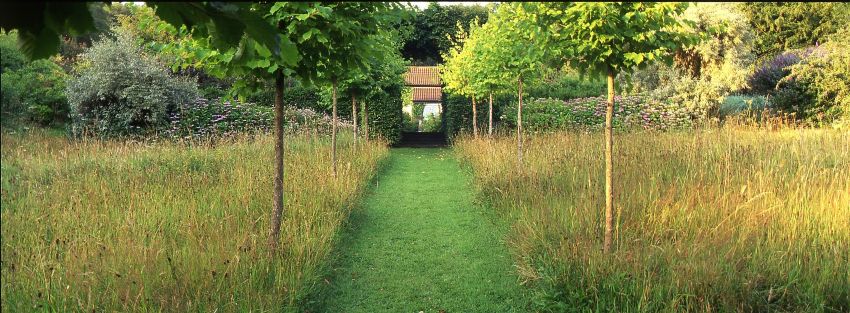
Anne turns a ride on mower upside down (with her on it)
We rapidly bypass loss of fruit trees
And explore our pretty wildflowers

Do you finish one bit before going on to the next?
Before I tell you about our meadow I must point out that we did not make the garden in the kind of chronological order that these posts may suggest. Every year, for many years, we had a massive and tearful (on my part) row about this.
Charles thought we ought to finish each bit that we started before moving on to the next. He objected to how messy each unfinished bit was and wanted them neat and tidy. (Sorry, Charles, but it’s true). I thought – and I was right, of course (as always….) that the only way to make a garden of the whole two acres was to get started everywhere we possibly could. So that was what we did, meaning there were many incidentals all going on at the same time.
And also, rescuing the house from shabby. In itself a major project.
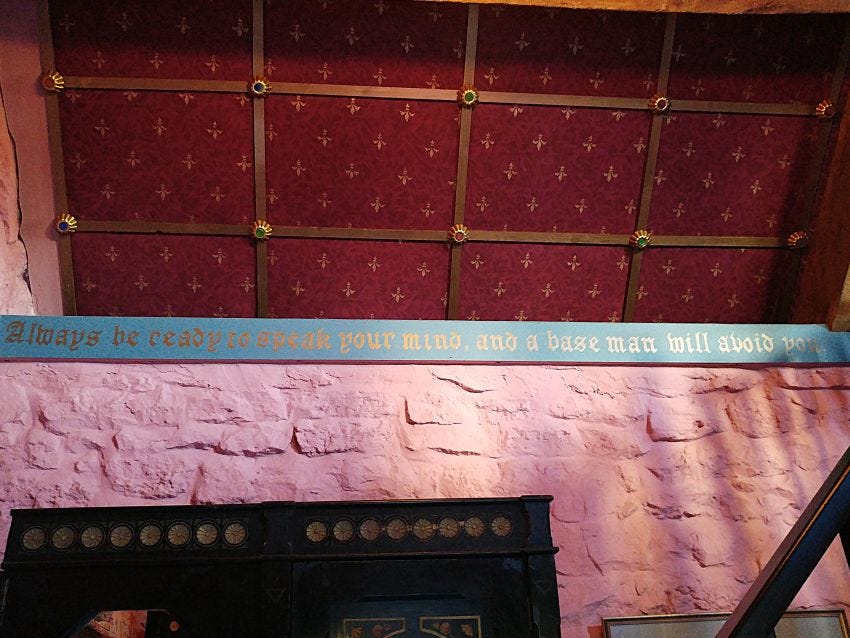
The Barn. My lettering says: “Always be ready to speak your mind, and a base man will avoid you.” You can guess why I chose that.
And then Charles managed to add more – he bought a piece of woodland from the Forestry Commission – and we had another two acres to manage. And a new mortgage. That’s a story to come. It makes me tired just thinking about it.
So – the Meadow.
Which is the bit below the Front Garden and to the side of the Veg Plot.
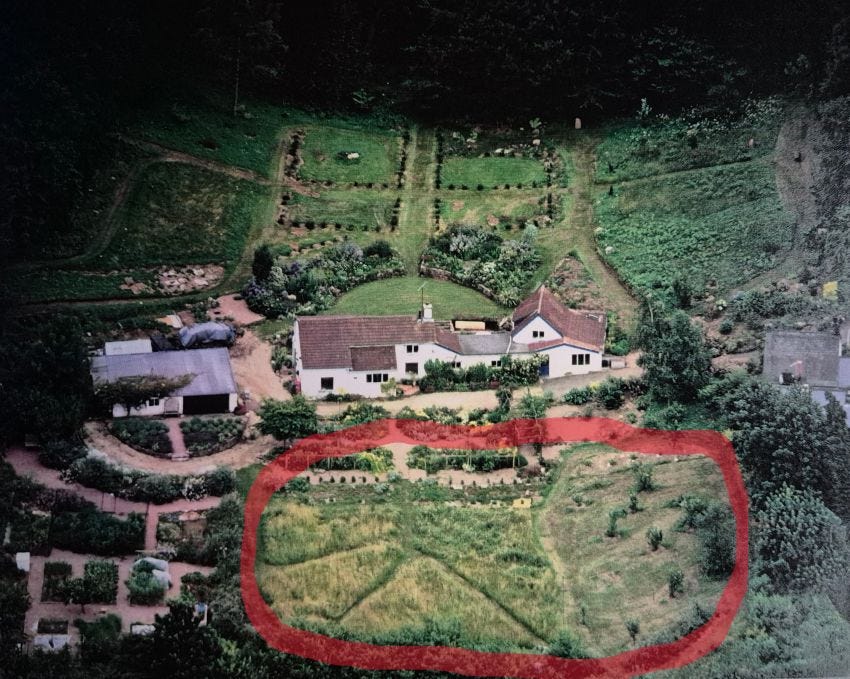
A commercial photograph of the garden in 1993. The Meadow and Orchard outlined in red.
The meadow is a genuine ancient meadow. For many years the land which is now our garden was a smallholding, and a 19th century census tells us that an agricultural labourer’s widow lives here, and keeps a cow. So there was probably a veg plot and the rest would have been used as pasture or meadow. (grazing and hay for that cow) We are members and have been surveyed by Monmouthshire Meadows – a great charity dedicated to conserving our local meadows. They are matched on the other side of the Wye Valley by The Parish Grasslands Project. You will see that these are not the colourful ‘annual meadows’ recreated every year by some gardeners by clearing and then sowing seeds of annuals. People sadly sometimes dig up ancient meadows to make such a flower meadow.
You didn’t come here for preaching. Now, when we first arrived our meadow had been used for animal grazing, (pasture) and because animals don’t politely take themselves to a convenient loo, it was over fertilised and coarse. We needed to cut it all down regularly and take off what was cut. Hence the Allen Scythe and much raking up and wheelbarrowing away our mulch. Then it became possible to think of buying a ride on mower and we went off again to a secondhand mowery place. Hm.
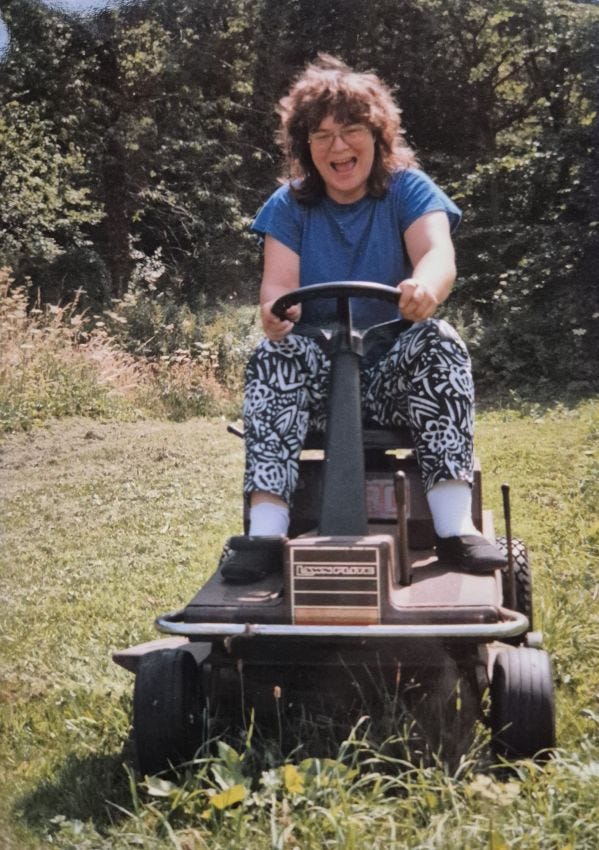
I look appropriately hysterical. It wasn’t long before I drove up a slope and the mower turned a somersault. I was shook up but not (phew!) hurt….
You’ll see on the right of the aerial photo above an area which we facetiously call the ‘Orchard’.
One of the early things we did was to plant several fruit trees there. Apples, a crabapple and a greengage. Two apple trees remain from this over optimistic effort. And they give us far too many apples when they fruit. (Frost can kill that off) But those trees are where the hay/mulch goes now. And they look pretty in spring. (Frost can kill that off too)
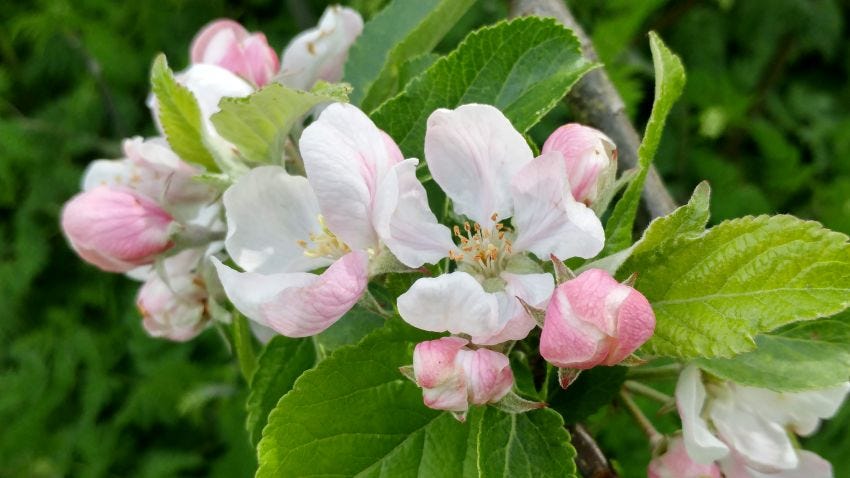
If I were an educational type I’d say stuff like “Many invertebrates visit apple blossoms, including bees, weevils, and parasitic wasps.” But I’m not.
As the meadow slowly became less fertile the wild things (they aren’t all flowers) began to re-emerge. Best of all and most treasured and counted are the orchids. Other people have more varieties and quantities, but we do treasure every one of ours.
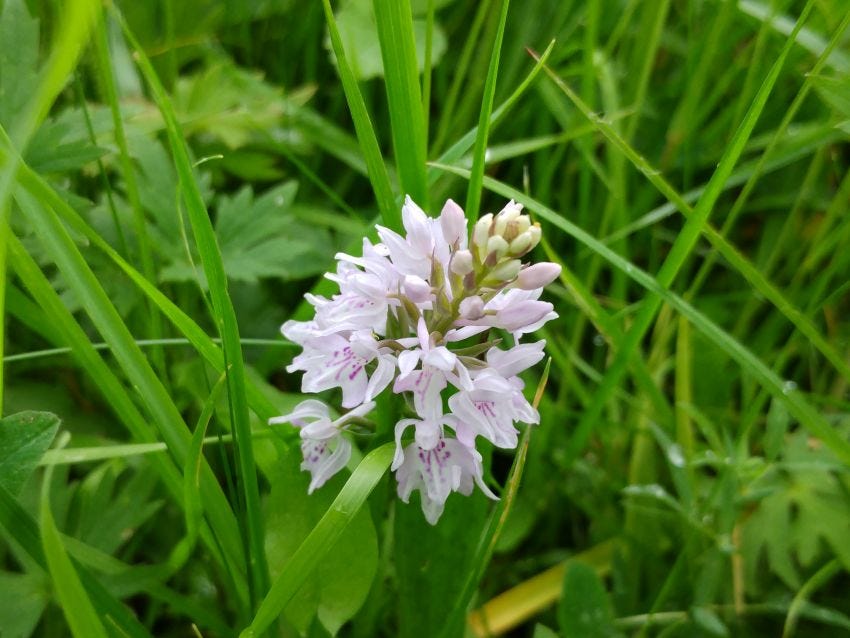
Common spotted ? COMMON!
I look appropriately hysterical. It wasn’t long before I drove up a slope and the mower turned a somersault. I was shook up but not (phew!) hurt….
Maybe the best, though, are the sheets of cowslips which have begun to spread.
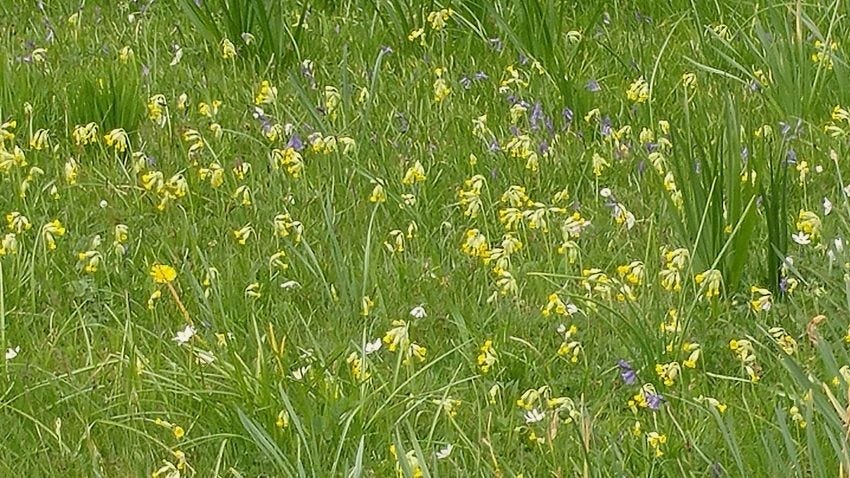
It’s stressful, you know, this conservation thing. You feel judged all the time – hence the counting of orchids, which varies wildly from year to year. If there are lots, you feel very worthy and chuffed. If not – a witless wildlife failure. It is stressful and worrying and just don’t believe a word of all that ‘gardening is good for your mental health stuff.
We started, as you may have noticed, by mowing paths kind of randomly in the meadow. Because that’s what you’re supposed to do. And it helps it all look natural, doesn’t it? Meadows are not natural though. They are places where people, usually farmers, grow hay. And anyway, I suddenly saw that we needed an avenue down the middle of the meadow. Straight down from the Front Garden.

Like that.
So we mowed that avenue and it instantly felt right, so it stayed. And if it was an avenue it needed trees. Which we got – bargain trees from a sympathetic tree grower – see above. He offered us Turkish Hazel (Corylus Colurna) as a recommended and affordable avenue, with a free extra for when one failed. Which one inevitably would, he thought, life being the way it is. The extra one failed.

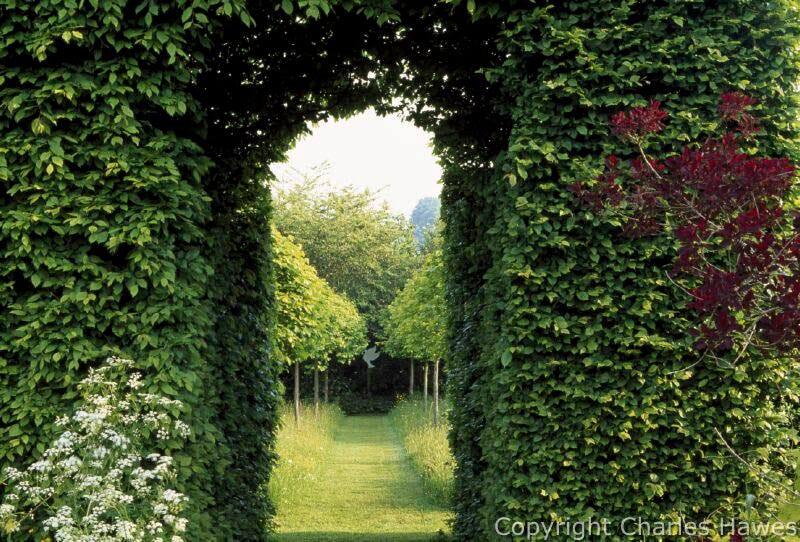
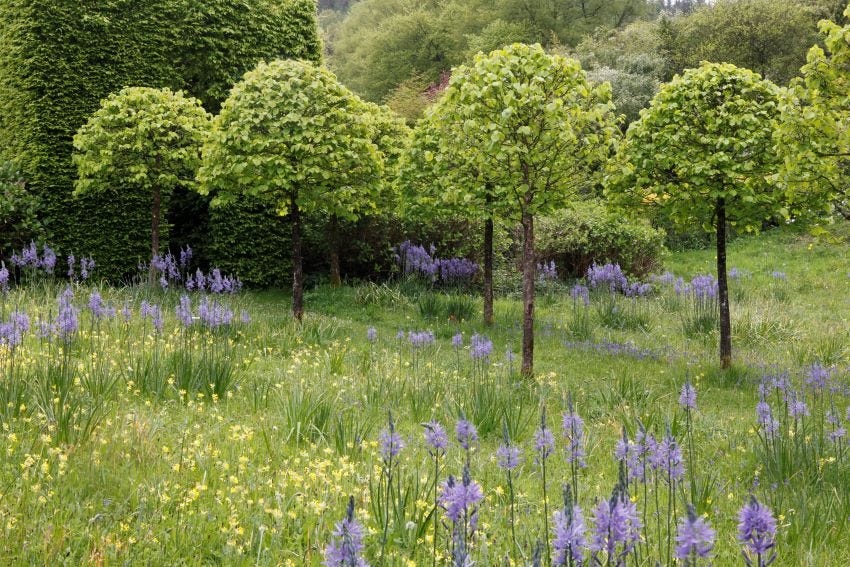
We loved them. For ages.
We failed to be purist about our authentic meadow, I’m afraid. Farmers and smallholders didn’t deliberately grow flowers in their fields. But we added hundreds of daffodils – and they are right for the place, aesthetically and historically – Narcissus pseudonarcissus and Narcissus pseudonarcissus subsp. obvallaris.
Bulbs are odd things.
When you order them and look at the cost you think you haven’t ordered enough at all. Then they arrive in a big box and you think of the planting job and decide there are far too many. When spring comes, though, you find it was a pathetic amount.
It took us years to get a reasonable spread.

Bit pathetic really – this was in the 1980s. And that’s Caesar, who didn’t mind a bit how many daffodils there were or weren’t.
One thing worth bearing in mind is that they naturally bulk up in a clump. So chucking them around as you are mostly advised and planting them one by one where they fall results in an initially unnatural looking display. They look best planted in small clusters. And throwing them just means you have to bend down and pick them up again to plant them.
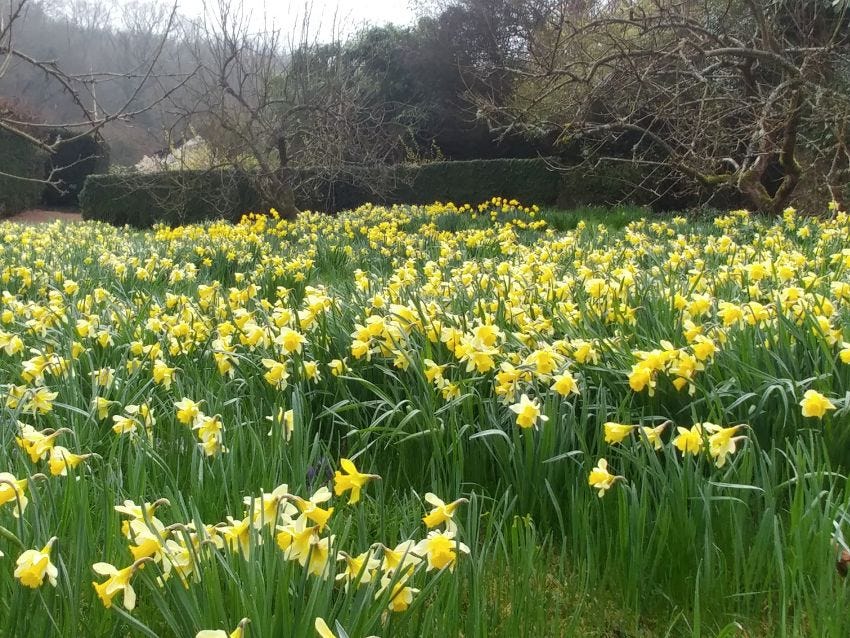
Eventually they look a bit better in places.
That’s it from me for now. Charles gets a look in after me though. Next time I will tell you about the meadow disasters, just to cheer you all up.
Charles
I love the meadow. I love it from now (mid-February) when the crocuses come through and the daffodils are showing their first shoots and buds, to July or August when all the flowers have done their flowering and it is all grassy, and then I like it when we cut it all down and it feels like this huge space.
And Anne has given us a succession of other flowers – three different varieties of Camassias which flower at different times in May, fritillaries, Irises (sparse but adding little jewels of colour), and several other flowering bulbs that I can’t remember the names of. And then “nature” has added hundreds of Moon Daisies to the cowslips and the orchids. We keep meaning to count all the different types of grass but life’s too short for counting grasses.
Pictures of it:


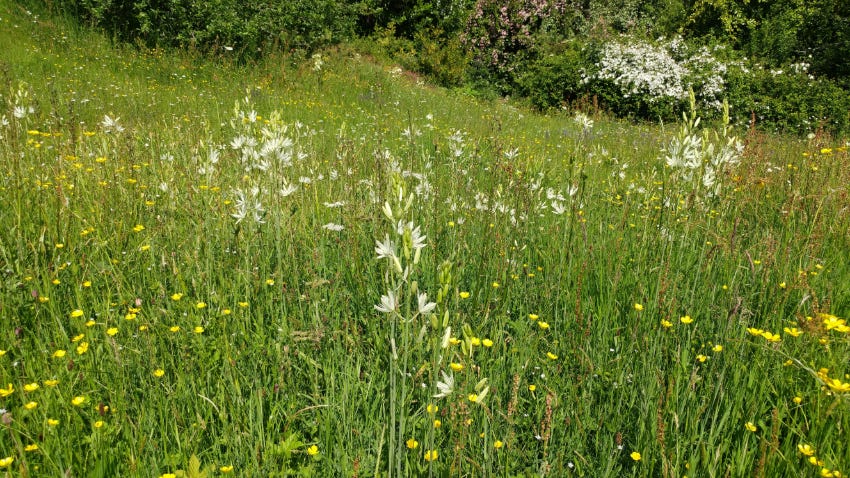

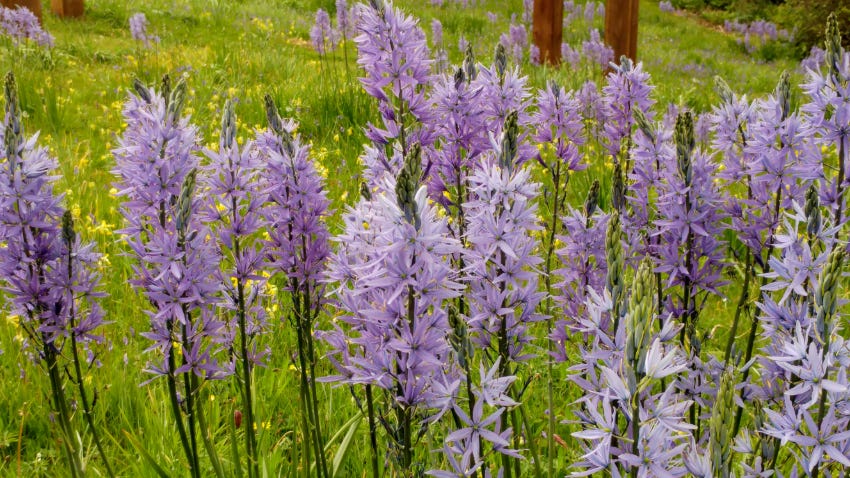
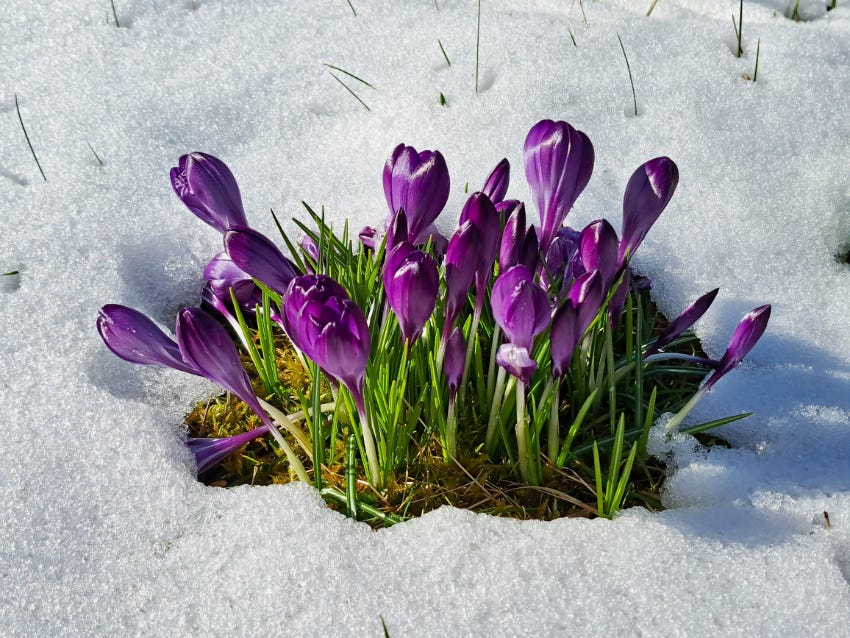
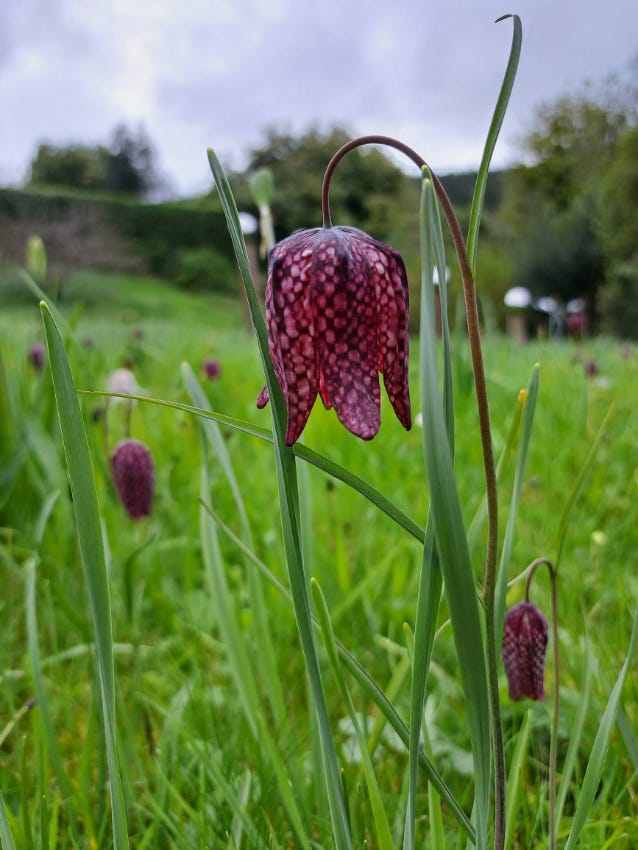
Making Veddw Garden Part Four: The Meadow. originally appeared on GardenRant on March 27, 2025.
The post Making Veddw Garden Part Four: The Meadow. appeared first on GardenRant.
